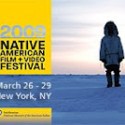Explore Articles Filed Under: Indigenous Culture

The Moche culture flourished in the northwestern coastal areas of Peru around AD 100–800. Human sacrifice was a significant part of their state religion, apparently to appease a deity named Ai Apaec, who is depicted in Moche art as fanged, half-human, most often in the shape of a spider, holding in one hand a severed human head and in another the crescent-shaped ceremonial knife called a tumi. In the archeological literature, this deity has come to be called the Decapitator. Were hallucinogens part of these ceremonies?

Anthropologist Edith Turner insists that spirit stuff is real because, during the frenzied climax of a lengthy Ndembu ritual in Zambia, she saw it come out of the patient’s body, and she observed it become a human tooth — an ihamba, a dead hunter’s tooth, which had been wandering around inside the patient, causing her severe pain. Turner considers, and rejects, the idea that some sort of sleight-of-hand might be involved in all this.
We live in a culture that is hierarchical — that is, in which people have power over other people. We accept this as being normal and natural, as if there were no other way to live. We create spaces — classrooms, offices, courtrooms — that express this hierarchy architecturally. But there are consequences to this way of living that are worth examining.

In 1985, at Ohkay Owingeh Pueblo — at that time called San Juan Pueblo — in New Mexico, a young filmmaker named Kenny Ausubel watched a Native American farmer take some bright red corn seeds from a little clay pot that had been embedded in the mud wall of his adobe home. This was the sacred red corn of the Pueblo, which no one had grown in forty years. The old farmer planted the sacred seeds, renewing an ancient contract between the people and the earth. For Ausubel, the moment was revelatory.

According to several recent news reports, the U.S. Fish and Wildlife Service is currently conducting a large-scale undercover investigation targeting people who are illegally buying, selling, or receiving bald and golden eagle feathers. On March 12, federal agents arrested four men — three from Washington and one from Oklahoma — for killing eagles and selling their feathers. One of the men, Reginald Dale Akeen, an enrolled Kiowa, is accused of traveling the powwow circuit under the name of J. J. Lonelodge and selling illegally obtained feathers to dance competitors for use in their regalia.

On March 25, 1916, a man of unknown name died of tuberculosis in California. He was known as Ishi, but that was not his real name, which no one knows; the word ishi means man in the Yahi language.
Ishi was the last surviving Yahi. His people had been destroyed by mining silt that poisoned their salmon streams, livestock that competed for grazing with deer, epidemics of alien diseases. His people had been hunted down and killed by white ranchers.

As we have discussed, the International Narcotics Control Board — a United Nations monitoring body that oversees the implementation of the UN drug control conventions — has called for the governments of Bolivia and Peru to abolish all uses of the coca leaf, including coca leaf chewing. In its 2007 annual report, the INCB asked Bolivia and Peru to make possessing and using coca leaf criminal offenses — a move that would make criminals of millions of people in the Andes and Amazon.

Peyote songs are the prayer music and ceremonial heart of the Native American Church. The songs have traditionally been sung, accompanied by the gourd rattle and water drum, in the various languages and musical styles of the indigenous peoples from which the church drew its membership. At the same time, the pan-Indian nature of the church made it a powerful vehicle for the diffusion of musical styles and content. Early studies of peyote songs, dating from the 1940s, found Navajo peyote singers using the Ute musical style, and recognizably the same peyote song among the Tarahumara, Navajo, and Cheyenne.

If you are going to be in New York this month, check out the 2009 Native American Film + Video Festival, running from March 26 to 29. Founded in 1979 and now celebrating its thirtieth anniversary, the festival is organized by the Film and Video Center of the National Museum of the American Indian. The festival aims to showcase the creative talents of Native American directors, producers, writers, actors, musicians, and cultural activists.

We have talked before about the Grob, McKenna, Callaway, et al. psychiatric study on the long-term effects of drinking ayahuasca in the ceremonies of the União do Vegetal church. I noted that the study had not clearly disentangled any bias that might have resulted from the fact that the ayahuasca drinkers — but not controls — had been preselected for their orderly churchgoing habits. Here is a study that may shed some light on that question.

Discussing the article:
Hallucinogens in Africa